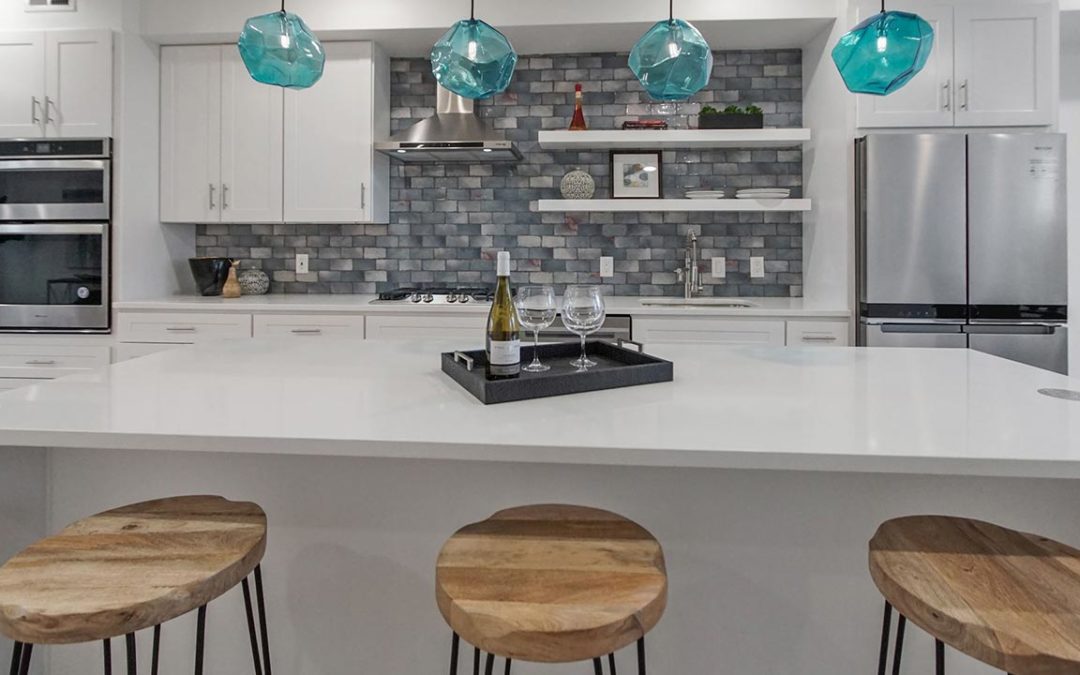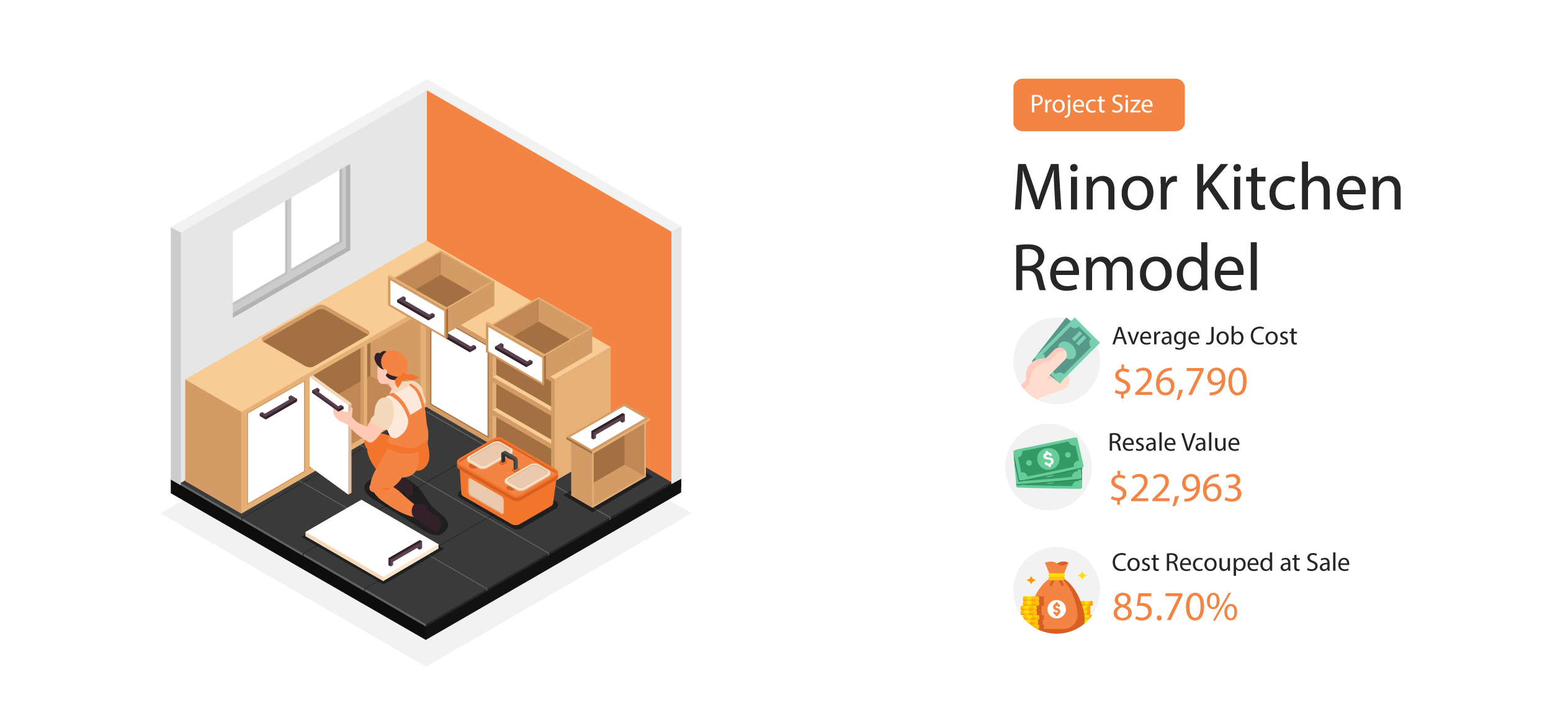
Lead Paint Removal & Abatement – Should I Worry About Lead Paint?

If you own an older home – particularly
one built before 1978 – there’s a good
chance that lead paint lurks beneath the
surface of your walls, trim, or exterior.
Even the mere mention of lead based
paint can send shivers down a
homeowner’s spine: Is my home safe to
live in?
Here’s the good news: while the presence
of lead paint doesn’t necessarily mean you
need to panic, it’s still important to know
the potential risks and address the issue
safely and effectively.
The big concern with lead paint arises from the dust particulates created at friction points, such
as windows and doors, where repeated movement and scraping can cause lead to accumulate
over time. This lead dust can even build up in the soil below windows, posing a risk to children
and pets who may play in these areas.
Exposure to lead can lead to serious health problems, particularly in young children, including
learning disabilities, behavioral issues, and developmental delays. In the most severe cases,
poisoning can occur when extreme lead levels are present for too long.
So, what’s a homeowner to do when? Removing lead paint requires careful planning and
execution to ensure the safety of all involved. From the initial lead risk assessment to the final,
lead-free permanent solution, having right information can help you enjoy your home in peace.
Your content goes here. Edit or remove this text inline or in the module Content settings. You can also style every aspect of this content in the module Design settings and even apply custom CSS to this text in the module Advanced settings.
What Is Lead Based Paint?
So, what exactly is lead paint, and what’s the main issue with it? Lead paint is any paint that
contains lead or lead compounds within its ingredients.
Years ago, lead was added to paint for all sorts of reasons – to make it dry faster, last longer,
look better, and even resist moisture. It was quite common until the late 1970s when the
Consumer Product Safety Commission finally banned the sale of lead paint for homes because
of all the health problems its presence could cause.
Even though they banned selling it in 1978, regulators didn’t require people to remove all the
lead paint that was already in homes. This means that a ton of older houses still have lead
paint on the walls, trim, windows, you name it.
The EPA says you can find lead paint in about:
● 87% of homes built before 1940
● 69% of homes built between 1940 and 1959
● 24% of homes built between 1960 and 1977
Lead paint isn’t always a problem if it’s in good shape, but when it starts to crack, peel, or wear
down, you’ve got trouble. It’s especially bad in places like windows and doors, where all that
friction from opening and closing them can create lead dust that you can breathe in or
accidentally swallow.
If you own a home or rental property, it’s crucial to know if there’s any lead paint lurking
around and to work with a contractor who knows their stuff when it comes to dealing with it
safely. The skills to remove lead based paint from any surface are not easy to learn, and if you
don’t know what you’re doing, you can end up causing more harm than good.
What Are The Risks Of Lead Based Paint?
Now that we know what lead paint is and how common it can be in older homes, let’s talk
about the risks. While finding lead paint in your home isn’t a reason to panic, it’s important to
understand the potential health hazards so you can take the right steps to pursue lead paint
removal if necessary.
Dust and Chip Inhalation
One of the biggest risks of lead paint comes from inhaling dust or chips that come from peeling
or cracking paint. This is especially common in high-friction areas like windows and doors,
where the constant movement can create a lot of dust over time. If you breathe in this dust, the
lead can get into your lungs and cause all sorts of health problems.
Accidental Ingestion
Another way lead paint can be dangerous is if you accidentally swallow it. This is a big concern
for young kids who might put their hands or toys in their mouths after touching lead paint chips
or dust. Even small amounts of lead can harm children, so it’s crucial to keep an eye out for any
peeling or chipping paint in your home. This is why many new families seek to safely remove
lead paint prior to moving into a new home.
Soil Contamination
Here’s something a lot of people don’t think about: lead paint can even contaminate the soil
around your home. When lead paint on the exterior of your house cracks or peels, it can fall off
and mix into the soil over time. This is especially common near windows, where years of
friction can create a lot of lead dust that builds up in the soil below. If kids or pets play outside,
this contaminated soil can be a real hazard.
Long-Term Health Effects
So, what kind of health problems can lead paint cause? While rare, extreme cases of
residential lead hazards can lead to long-term issues. In kids, even low levels of lead exposure
can lead to issues like learning disabilities, behavioral problems, and slowed growth. In adults,
lead poisoning can cause high blood pressure, joint and muscle pain, and memory problems.
What Is Lead Poisoning?
What Is Lead Poisoning?
When it comes to lead poisoning, it’s essential to separate fact from fiction. While lead-based
paint can be a serious issue, it’s important not to panic or fall for scaremongering tactics. The
key is to arm yourself with accurate information from reliable sources so you can make
informed decisions about how to handle any lead paint in your home
According to the U.S. Environmental Protection Agency (EPA), lead exposure can indeed be
harmful, especially to young children and pregnant women. Even low levels of lead in
children’s blood can lead to behavior and learning problems, lower IQ, slowed growth, hearing
problems, and anemia. In pregnant women, lead exposure can cause premature birth, smaller
babies, and even miscarriage.
However, the EPA also emphasizes that the most important step is to prevent lead exposure
before it occurs. This means being proactive about identifying and addressing any potential
lead hazards in your home, but doing so in a calm and systematic way.
One common misconception is that if you have lead-based paint in your home, you need to hire
a lead paint removal solution immediately. In reality, lead-based paint that is in good condition
is not necessarily a hazard. The real danger comes from lead-based paint that is deteriorating –
peeling, chipping, chalking, cracking, or otherwise damaged. This is when it can create lead
dust that can be inhaled or ingested.
So, what should you do if you suspect you have lead paint in your home? The EPA recommends
a few key steps:
1. Test. Get your home tested. A certified lead paint removal expert can test your home
for lead and identify any potential hazards.
2. Monitor. If you have lead-based paint that is in good condition, simply monitor it
regularly for any signs of wear or damage.
3. Contact A Professional. If you have lead-based paint that is deteriorating, work with a
certified lead abatement contractor to safely remove or encapsulate it.
4. Keep Up With Maintenance. In the meantime, regular cleaning and good hygiene
practices can go a long way in reducing your risk of lead exposure. This includes
cleaning floors, window sills, and other surfaces with a damp cloth or mop, and
frequently washing hands and toys.
At I.S. Enterprises, we understand the seriousness of lead hazardous material in your home.
We also know the importance of accurate information and measured expert-driven responses.
As a certified contractor skilled in lead paint abatement methods and lead paint removal, we’re
here to help you navigate this dangerous job with facts, not fear
Methods for Lead Paint Removal and Abatement
If you’ve identified lead paint hazards in your home, the next step is to address them. This is
where the terms “lead paint removal” and “lead paint abatement” come into play. While these
terms are often used interchangeably, they actually refer to different methods of dealing with
lead paint. Both are specialized techniques, and require skills in dealing with toxic material
problems.
How To Remove Lead Paint
Lead paint removal refers to the complete removal of lead-based paint from a surface. There
are several methods that can be used to achieve this, each with its own advantages and
considerations.
Method 2. Low Temperature Heat Gun Removal Methods
Another method is using a low temperature
heat gun. This tool heats up the paint, causing it to bubble and separate from the surface. The softened paint can then be scraped off with a hand tool. While this method can be effective, it’s crucial to keep the heat gun at a low temperature (below 1100°F) to avoid vaporizing the lead, which can create highly dangerous lead fumes


Method 1: Wet Sanding To Remove Lead
Paint
One common method is wet sanding. This
involves using an electric sander equipped
with a sanding attachment and special
abrasive paper. The process helps to
minimize the amount of lead dust
generated, as the water keeps the dust
particles contained. However, it’s important
to note that even with this sanding method,
proper containment and personal
protective equipment (PPE) are still
necessary.
Method 3: Abrasive Blasting To Remove Lead Paint
For larger projects, abrasive blasting can be used. This method involves using compressed
air to blast an abrasive material (such as sand or crushed walnut shells) onto the painted
surface. The abrasive action strips away the paint. However, this method generates a large
amount of lead dust and debris, so it must be done with proper containment, ventilation, and
filtration.
Speaking of filtration, a crucial tool in any lead paint removal project is a High-Efficiency
Particulate Air (HEPA) vacuum. HEPA vacuums are specially designed to capture even the
smallest lead dust particles, with a filtration system that traps 99.97% of particles down to 0.3
microns in size. Using a HEPA vacuum for cleanup during and after removal is essential to
minimize the spread of lead dust.
Regardless of the removal method used, the work area must be properly contained to prevent
the spread of lead contamination to other parts of the home. This typically involves sealing the
work area with plastic sheeting, using negative air pressure to keep the contaminated air inside
the containment, and having workers follow strict decontamination procedures when entering
and leaving the work area.
Lead Paint Abatement
Lead paint abatement, on the other hand, refers to any measure designed to permanently
eliminate lead-based paint hazards. This can include removal, but it also encompasses other
methods, such as:
● Encapsulation: This involves applying a special coating that creates a watertight bond
and seals in the lead-based paint. This ensures that painted surfaces are sealed off and
cannot release any lead dust or fumes.
● Enclosure: By covering the lead-based paint with a sturdy material, such as drywall or
paneling, you can prevent the lead from coming into contact with people or the
environment. However, this method is only effective if the enclosure remains intact and
undamaged.
● Replacement: In some cases, it may be necessary to completely replace materials that
contain lead-based paint, such as windows, doors, or other building components. This
can be a costly option but may be necessary for long-term safety.
The key advantage of abatement over removal is that it can often be done with minimal
disturbance to the existing paint, thus reducing the risk of creating lead dust.
Choosing the Right Method
Choosing the Right Method
So, how do you know which method is right for your situation? Working with a certified lead
abatement contractor like I.S. Enterprises is crucial. We can assess your specific situation and
recommend the most effective and least risky course of action.
Factors we consider include the condition of the paint, the location of the hazard, the age of the
home, and your budget. In many cases, a combination of methods may be recommended. For
example, we might suggest removing lead paint from window sills and door frames
(high-friction, high-impact areas) while using encapsulation on walls and ceilings.
Regardless of the method chosen, the most important thing is that the work is done by trained,
certified professionals following strict safety protocols. At I.S. Enterprises, our team is
EPA-certified and follows all recommended practices for home restoration projects.
What To Expect With Lead Paint Removal Cost
When it comes to lead paint removal or abatement, one of the first questions homeowners
often ask is, “How much is this going to cost me?” And it’s a fair question. Lead paint
remediation can be a significant investment, but it’s one that pays off in the health and safety
of your family and the value of your home.
Factors That Affect Cost
The cost of lead paint removal or abatement can vary widely depending on several factors:
● The size of the area to be treated
● The condition of the paint
● The method of removal or abatement chosen
● The accessibility of the area
● The prevailing labor rates in your area
It’s important to note that this is a very rough estimate. The only way to get an accurate picture
of the cost for your specific situation is to have a certified lead inspector assess your home and
complete lead risk assessments that ensure the right lead removal method is chosen.
Always Get An Inspection and Consultation!
This brings us to a crucial point: before any lead paint removal or abatement work begins, it’s
essential to have your home inspected by a certified professional. This inspection will identify
all the areas in your home where lead paint is present, assess the condition of the paint, and
determine the extent of the hazard.
Based on this inspection, the lead abatement contractor can recommend the most appropriate
and cost-effective course of action. They can also give you a more precise estimate of the cost.
In some cases, the inspection might reveal that full-scale removal or abatement isn’t necessary.
For example, if the lead paint is in good condition and not in a high-traffic area, the inspector
might recommend a less invasive and less costly approach, such as regular monitoring and
maintenance.
Lead Removal & Abatement are an Investment, Not Just a Cost
It’s natural to balk at the abatement or lead paint removal cost. However, it’s important to view
lead paint removal cost as an investment in your home and your family’s health, not just an
expense.
For one, lead paint removal or abatement can significantly increase the value of your home. In
many states, sellers are required to disclose known lead hazards to potential buyers. Having a
lead-free home can be a major selling point.
More importantly, the cost of not addressing lead paint hazards can be far higher. Exposure to
lead can result in serious health problems, particularly for children, including learning
difficulties, behavioral issues, and even irreversible brain damage. The human cost of these
health issues far outweighs any financial cost.
Worried About Lead? Don’t Panic – Contact I.S. Enterprises
At I.S. Enterprises, we understand that lead paint removal or abatement can be a daunting
prospect, both logistically and financially. That’s why we offer comprehensive home renovation
services that aim to help restore the look – and comfort – of your home, no matter the age.
Rather than fear, we believe that knowledge is powerful – so we will explain our findings and
recommend the best course of action for your unique situation. We’ll also provide a detailed,
transparent estimate of any costs associated with remodeling or restoration.
Remember, when it comes to lead paint, an ounce of prevention is worth a pound of cure.
Investing in lead paint removal or abatement now can save you incalculable costs down the
line. To learn more about our home improvement services, reach out today



